Image adapted from sameer chogale/Getty Images
While it might not come soon, eventually there will be an end to the Russia-Ukraine war. What then?
Preparing for the Aftermath
No matter when the hot phase of the current war ends, Russia will remain a threat both to Ukraine and to the interests of the United States and its allies. How, then, should the United States deal with Russia after the war? How should postwar considerations affect wartime policy?
Whenever the conflict ends, the way that the United States approaches its relationship with Russia will affect U.S. interests in Europe and, likely, around the globe. Given these stakes, U.S. strategists need to plan for the postwar period now.
Answers to these questions matter immensely. Decisions made in the immediate aftermath of wars can have significant long-term consequences. The settlements that ended the First and Second World Wars reshaped nations, societies, and the international order in ways that are still felt today. RAND analysis has found that policymakers’ assumptions about the trajectory of major wars — such as how long such wars will last and what postwar environments will be — often prove wrong, complicating the planning for their aftermath.
Although the Russia-Ukraine war is not (as of this writing in late 2023) a great power conflict like World War I and World War II, it pits one major power against a large neighboring state that is supported by another major power, the United States, and its allies. Whenever the conflict ends, the way that the United States approaches its relationship with Russia will affect U.S. interests in Europe and, likely, around the globe. Given these stakes, U.S. strategists need to plan for the postwar period now. The first step is to identify possible U.S. policy approaches and assess their likely impact.
Imagining Possible Futures
Planning for after the war is fraught with significant uncertainty: Strategists do not know the conflict’s trajectory, when the fighting will stop, or how the international environment will change as a result. Given this uncertainty, the implications of U.S. strategic choices must be explored in different contexts.
Myriad contexts can be imagined. To make analysis feasible, RAND researchers constructed two ideal-type postwar worlds — a combination of the outcome of the war and nature of the international environment when it ends.
As detailed in Box 1, one of these worlds is modestly less favorable from the U.S. perspective (World A) and the other modestly more favorable (World B). The research focused on these moderate variations rather than extremely negative or very positive ones.
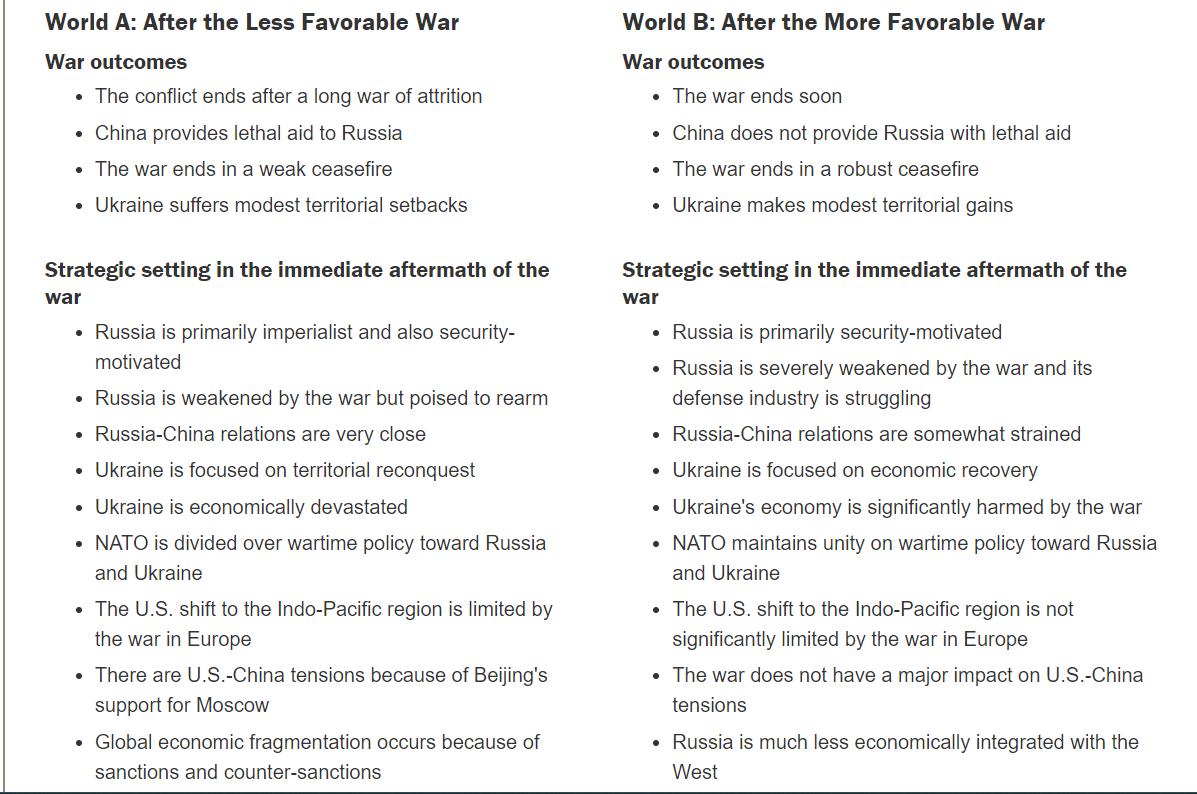
Box 1. Two Postwar Worlds
World A: After the Less Favorable War
War outcomes
- The conflict ends after a long war of attrition
- China provides lethal aid to Russia
- The war ends in a weak ceasefire
- Ukraine suffers modest territorial setbacks
Strategic setting in the immediate aftermath of the war
- Russia is primarily imperialist and also security-motivated
- Russia is weakened by the war but poised to rearm
- Russia-China relations are very close
- Ukraine is focused on territorial reconquest
- Ukraine is economically devastated
- NATO is divided over wartime policy toward Russia and Ukraine
- The U.S. shift to the Indo-Pacific region is limited by the war in Europe
- There are U.S.-China tensions because of Beijing’s support for Moscow
- Global economic fragmentation occurs because of sanctions and counter-sanctions
World B: After the More Favorable War
War outcomes
- The war ends soon
- China does not provide Russia with lethal aid
- The war ends in a robust ceasefire
- Ukraine makes modest territorial gains
Strategic setting in the immediate aftermath of the war
- Russia is primarily security-motivated
- Russia is severely weakened by the war and its defense industry is struggling
- Russia-China relations are somewhat strained
- Ukraine is focused on economic recovery
- Ukraine’s economy is significantly harmed by the war
- NATO maintains unity on wartime policy toward Russia and Ukraine
- The U.S. shift to the Indo-Pacific region is not significantly limited by the war in Europe
- The war does not have a major impact on U.S.-China tensions
- Russia is much less economically integrated with the West
Researchers then assessed how two ideal-type U.S. strategies — a hardline approach and a less hardline approach — would perform in these two worlds (see Box 2).
If the United States adopts the hardline strategy, it would seek to punish, deter, and weaken Russia by sustaining many elements of wartime strategy, such as sanctions and enhanced U.S. force posture in Europe. If the United States chooses the less hardline strategy, it would be open to negotiations and more-restrained political and military policies aimed at stabilizing relations with Russia.
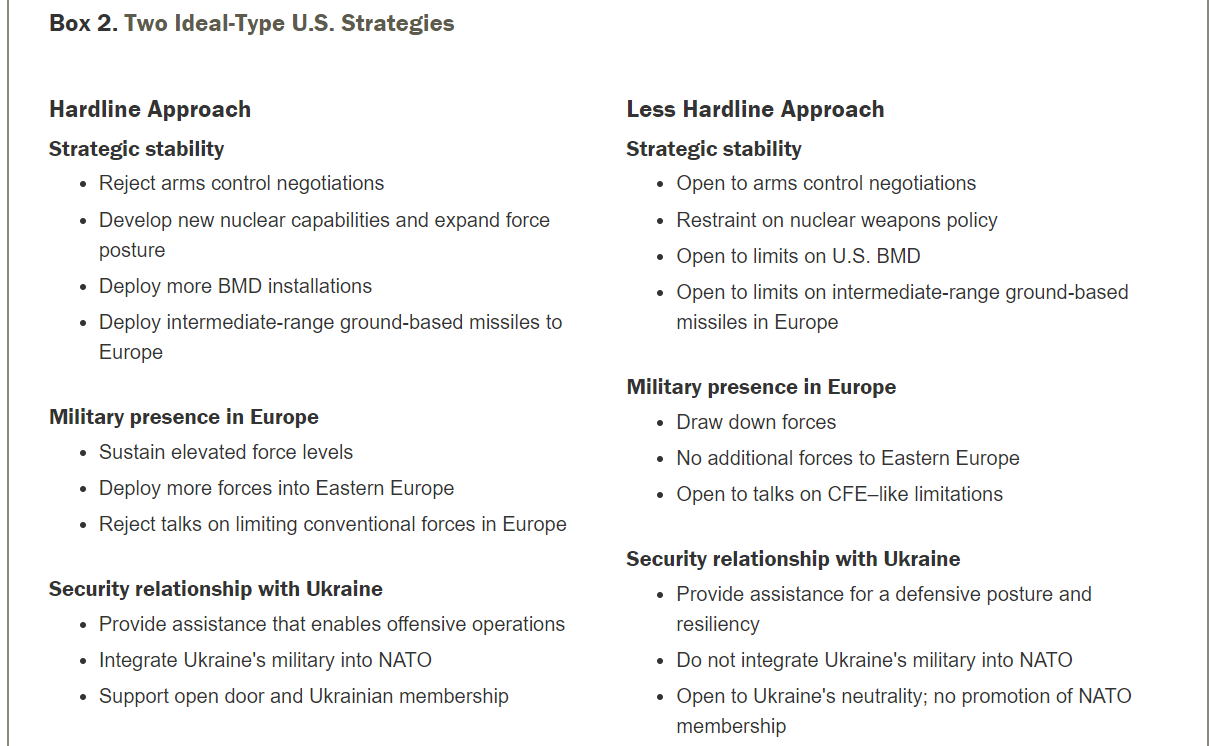
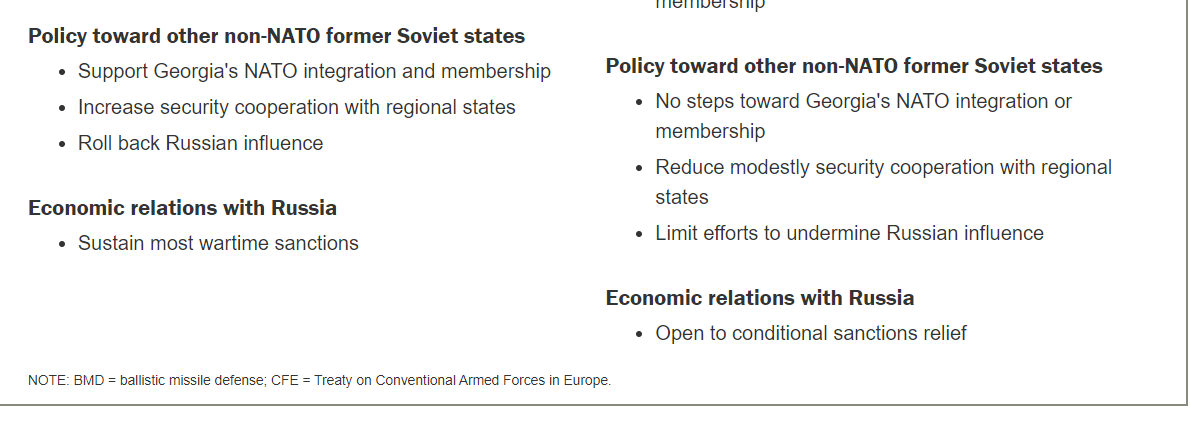
Box 2. Two Ideal-Type U.S. Strategies
Hardline Approach
Strategic stability
- Reject arms control negotiations
- Develop new nuclear capabilities and expand force posture
- Deploy more BMD installations
- Deploy intermediate-range ground-based missiles to Europe
Military presence in Europe
- Sustain elevated force levels
- Deploy more forces into Eastern Europe
- Reject talks on limiting conventional forces in Europe
Security relationship with Ukraine
- Provide assistance that enables offensive operations
- Integrate Ukraine’s military into NATO
- Support open door and Ukrainian membership
Policy toward other non-NATO former Soviet states
- Support Georgia’s NATO integration and membership
- Increase security cooperation with regional states
- Roll back Russian influence
Economic relations with Russia
- Sustain most wartime sanctions
Less Hardline Approach
Strategic stability
- Open to arms control negotiations
- Restraint on nuclear weapons policy
- Open to limits on U.S. BMD
- Open to limits on intermediate-range ground-based missiles in Europe
Military presence in Europe
- Draw down forces
- No additional forces to Eastern Europe
- Open to talks on CFE–like limitations
Security relationship with Ukraine
- Provide assistance for a defensive posture and resiliency
- Do not integrate Ukraine’s military into NATO
- Open to Ukraine’s neutrality; no promotion of NATO membership
Policy toward other non-NATO former Soviet states
- No steps toward Georgia’s NATO integration or membership
- Reduce modestly security cooperation with regional states
- Limit efforts to undermine Russian influence
Economic relations with Russia
- Open to conditional sanctions relief
NOTE: BMD = ballistic missile defense; CFE = Treaty on Conventional Armed Forces in Europe.
How the Future Plays Out Under Different U.S. Strategies
Researchers then assessed the impact of both strategies in both worlds, yielding four alternative futures. Table 1 depicts the futures derived from this interaction of the two strategies with the two worlds.
Table 1. Alternative Futures in the Decade After the Russia-Ukraine War
| Hardline U.S. Approach | Less Hardline U.S. Approach | |
|---|---|---|
| World A: After the Less Favorable War |
Future 1: Pervasive instability |
Future 2: Localized instability |
| World B: After the More Favorable War |
Future 3: Cold War 2.0 |
Future 4: Cold peace |
The following section summarizes the key dynamics in each future in the decade following the war and explores the implications for the following five U.S. interests:
- The U.S. position in the distribution of power in key regions
- The risk of a major power war
- The strength of the U.S. economy
- Ukraine’s security and prosperity
- Conflict risk in other non-NATO former Soviet states
Four Alternative Futures
Each future scenario includes a description of how international events evolve in the decade after the war ends and an assessment of how those events affect the aforementioned five U.S. interests.
Future 1: Pervasive Instability
Photo by Staff Sgt. Shawn Coover/U.S. Marine Corps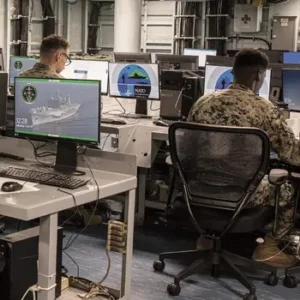
This future envisions a postwar decade of instability at many levels: on the ground in Ukraine, between Russia and NATO in Europe, and at the strategic level between the United States and its two main nuclear rivals, Russia and China.
- The situation in Ukraine remains a powder keg: Both sides violate the ceasefire and prepare for a second war.
- Political relations between NATO and Russia are worse than before the war.
- U.S. policy fuels a nuclear arms race with Russia and China, and the two rivals cooperate to undermine U.S. interests more deeply than ever before.
- High tensions accelerate global economic fragmentation and inhibit Europe’s growth, factors that drag modestly on the U.S. economy.
How Did We Get Here?
The war ends with a less favorable outcome (World A), and the United States adopts a hardline policy toward Russia to impose costs on Moscow, deter another invasion of Ukraine, and send the message to all U.S. rivals that aggression does not pay.
Russia reinvigorated its defense industry during the war, addressed some military challenges (such as poor training), and gained lethal aid from China. Although NATO is still stronger than Russia, hardline postwar U.S. policies, such as bilateral agreements to deploy more forces to Eastern Europe, lead some allies (such as France and Germany) to see the United States as a provocateur. As a result, those allies’ commitments to collective defense are less robust. By the end of the decade, however, Russia’s belligerent behavior leads to greater alliance cohesion.
U.S. support for Ukraine’s NATO integration and its increased security cooperation with other former Soviet countries clash with Russia’s continued imperialist agenda in the region, driving political tensions to new highs.
Both the United States and Russia bolster their force postures along the NATO-Russia frontier. Diplomatic relations remain poor and threat perceptions run high, creating conditions ripe for misperception about intentions. Therefore, the risk of catastrophic conflict is higher than before the war in Ukraine, even if the absolute risk remains low.
The United States refuses to engage in arms control, given Russia’s past noncompliance and the atrocities that it committed during the war. U.S. deployments of intermediate-range missiles and BMD infrastructure in Europe provoke Russian fears about its assured retaliation capability. In response, Russia begins a nuclear buildup and closer cooperation with China on countering U.S. capabilities. Without arms control, these dynamics fuel a nuclear arms race. Beijing is also unsettled by the hardline U.S. nuclear policy and accelerates its own buildup.
More worrisome, Russia’s and China’s concerns about their assured retaliation capabilities in this setting increase pressures to use nuclear weapons first in the event of a crisis. Although nuclear war is not likely, there is a greater risk than before the war in Ukraine.
Russia’s strong imperialist drive continues, so it uses the ceasefire to prepare for another invasion when the opportunity presents itself. Ukraine’s focus on reconquest leads it to continue militarizing and centralizing power, eroding its democracy and reducing investment, which undermines economic growth. U.S. support for Ukraine’s integration with NATO and its assistance to enable an offensively oriented Ukrainian military increases the likelihood that Russia will strike preventively to forestall Kyiv’s NATO membership or degrade its capabilities. The weak ceasefire, combined with Russia and Ukraine’s ambitions, means that war could also recur through an escalation of skirmishes along the line of contact. Increased U.S. security cooperation with other non-NATO former Soviet states leads to more-intense competition with Russia in the region.
Future 2: Localized Instability
Photo by miodrag ignjatovic/Getty Images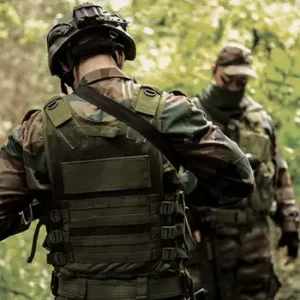
This future features greater regional and strategic stability, but the risk of conflict recurrence in Ukraine remains high.
- Ukraine and Russia are not committed to ceasefire, so the risk of escalation along the line of contact remains high.
- Political and military tensions between NATO and Russia, while still elevated, are lower than in Future 1.
- Nuclear dynamics with Russia and China are more stable.
- Reduced global economic fragmentation translates into less fallout for the U.S. economy.
How Did We Get Here?
In the aftermath of the unfavorable war (World A), the United States decides that it devoted too many resources to Europe with very little to show for it. Washington adopts a less hardline approach toward Russia, hoping to stabilize relations and shift its focus to the Indo-Pacific region.
Although the United States reduces force levels in Europe from their wartime high, the regional military balance still favors NATO. Not only has Russia suffered major combat and economic losses during the war, but Moscow, seeing a less acute threat to its west, also invests less in capabilities for a high-end fight than it does in Future 1. Instead, with its imperialist drive still strong, Russia concentrates on preparations for another war in Ukraine. Unlike in Future 1, NATO members remain unified on the alliance’s core collective defense mission through the postwar decade, despite some disagreements. Such allies as Germany are more comfortable with the less hardline U.S. approach to Russia. Although Eastern European allies lobby the United States to take a more hawkish stance, they are no less committed to the alliance. The less hardline approach toward Russia requires fewer U.S. resources in Europe, freeing up funds and forces to dedicate to the Indo-Pacific region.
Washington’s willingness to return to bilateral arms control, its lack of support for deeper Ukrainian integration with NATO, and its restraint on engagement with other non-NATO former Soviet countries all reduce U.S.-Russia political tensions. Despite fears that such moves would embolden Russia, these less hardline policies do not undermine NATO‘s already strong deterrent. After all, Russia did not attack NATO member states during the war, despite the allies’ unprecedented support for Ukraine. Still, the situation on the ground in Ukraine is unstable. The weak ceasefire provisions fail to restrain both sides, which are equally committed to taking more territory by force. However, the risk of war in Ukraine is lower than in Future 1 due to differences in U.S. policy. With Washington’s encouragement, Kyiv adopts a military posture optimized for defense — known as a porcupine strategy — rather than focusing its force on offensive maneuvers. This posture is more effective at deterring opportunistic Russian aggression and limits Moscow’s incentives to strike Ukrainian forces preventively. Still, Ukraine remains on a war footing: Militarization and centralization of power are undermining its democracy and economy, as in Future 1. U.S. restraint on security cooperation with other non-NATO former Soviet states means that Russia has less incentive than before the war to use force to keep those countries in its orbit.
Future 3: Cold War 2.0
Photo by zrfphoto/iStock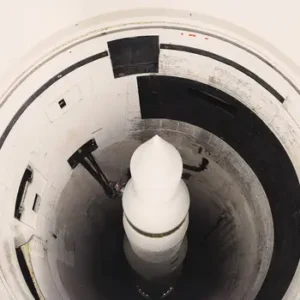
In this future, strategic and regional tensions, rather than the risk of another conflict in Ukraine, create a new Cold War–like atmosphere.
- Tensions along the line of contact in Ukraine become less pronounced, Ukraine’s economy recovers, and its democratic institutions grow stronger.
- Feeling under threat from assertive U.S. force posture in Europe, a weakened Russia relies more on nuclear signaling and gray zone tactics to defend its interests.
- The United States is in a nuclear arms race with both Russia and China.
How Did We Get Here?
After the more favorable war outcome (World B), the United States adopts a hardline policy, with the intent to kick a major power rival while it’s down.
The longer war weakened Russia even more relative to NATO than in Futures 1 and 2, leading some allies to question the need for a hardline U.S. approach toward Moscow. These divisions continue throughout the decade, raising persistent questions about the allies’ commitment to collective defense.
As in Future 1, the United States adopts a less restrained nuclear policy and increases deployments of conventional forces in Eastern Europe. Russia has fewer resources to respond with a conventional buildup in this future. Therefore, Moscow relies on gray zone activities (e.g., election interference, information operations) and, more troublingly, nuclear signaling. The risk of nuclear conflict is thus elevated compared with the other futures.
Political tensions also run high as U.S. support for Ukraine’s NATO membership and enhanced security cooperation with other non-NATO former Soviet states provokes more-intense U.S.- Russia competition. Russia seeks to counter U.S. influence in the region, leading to greater risk of conflict in these countries than in Future 2. But the risk is lower than in Future 1 because Moscow’s less imperialist outlook in this future leads it to preserve limited resources for the strategic competition with the United States.
The risk of renewed conflict along the line of contact in Ukraine is lower than in Futures 1 and 2, thanks to restraint on both sides and the robust ceasefire, which includes such mechanisms as a demilitarized zone and processes for addressing disputes. Ukraine’s respect for the ceasefire and focus on recovery and reform bring greater support from the European Union (EU), a return of refugees, and more private investment, which all fuel its economy. Shifting focus away from territorial reconquest, Ukraine becomes less militarized and eases wartime emergency powers, strengthening its democracy. However, the U.S. policy of supporting Ukraine’s capacity for offensive maneuver and integration with NATO could drive Russia to attack preventively.
The hardline U.S. strategy and more-intense U.S.-Russia competition demands significant resources in Europe, limiting capacity for the Indo-Pacific region. Moreover, the intense postwar nuclear competition incentivizes Russia and China to engage in technology transfers and joint development to counter the U.S. quest for nuclear superiority.
While Europe’s economy is better off in this future — thus creating fewer ripple effects for the United States than in Future 1 — tensions with Russia and China continue to fuel global economic fragmentation, dragging on U.S. growth.
Future 4: Cold Peace
Photo by Lawrence Jackson/The White House via Wikimedia Commons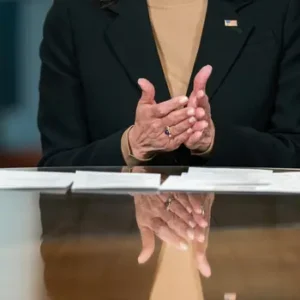
While the Russia-Ukraine war has permanently transformed the security landscape, this future is defined by greater stability — strategically, regionally, and locally — than the others.
- Nuclear tensions among the United States, Russia, and China are lower than in the other futures.
- NATO-Russia relations are more fraught than before the war, but they are less likely to lead to a direct clash than in the other futures.
- The ceasefire in Ukraine has held up and is more likely to hold indefinitely than in the other three scenarios.
- Ukraine is integrating with the EU, consolidating its democracy, and building a strong independent deterrent against future Russian aggression.
How Did We Get Here?
After the more favorable war outcome (World B), the United States adopts a less hardline approach to reduce political and military tensions in Europe. As a result, the Kremlin is less preoccupied with perceived threats from the West and devotes fewer resources to defense in this scenario.
U.S. miliary restraint and willingness to negotiate on conflicts of interest lead to lower tensions than in the other futures. The two sides remain rivals with even more mistrust than before the war. But the risk of a NATO-Russia conflict resulting from escalating competition and misperception about intentions is lower than in any of the other futures. Moreover, lower political tensions and progress on arms control reduce Russia’s concerns about its assured retaliation capabilities, mitigating first-use pressures. Although the new strategic arms competition with China continues, the more restrained U.S. nuclear posture does not add further fuel to the fire.
Lower major power tensions in this future lead to less global economic fragmentation. Meanwhile, the shorter war and greater postwar stability leave European economies relatively stronger. As a result, geopolitics does not drag on the U.S. economy as much in this future as it does in the others.
Ukraine is focused on economic development and EU integration and adopts a defensive posture. The robust ceasefire reduces the risk that incidents along the line of contact could escalate. The two sides are far from reaching a peace settlement, but they make progress on narrower issues, such as prisoner exchanges and freedom of movement for civilians across the conflict line. Because Ukraine’s government is focused on reform and the risk of war is low, its economy does comparatively well in this future. U.S. restraint in other non-NATO former Soviet states, combined with Moscow’s less pronounced imperialism, reduces regional conflict risk.
Comparing the Futures
Figure 1 shows how the futures compare across five key U.S. interests. Future 1 is uniformly worse for U.S. interests, while Future 4 is the most positive. In all futures, the United States faces a higher risk of a major power conflict than before the war, but the risk of such a conflict is lowest in Future 4.
Figure 1. Summary of Implications for U.S. Interests
| Interests | Future 1: Pervasive Instability | Future 2: Localized Instability | Future 3: Cold War 2.0 |
Future 4: Cold Peace |
|---|---|---|---|---|
| U.S. position in the global distribution of power in Europe | Somewhat favorable | Favorable | Very favorable | Extremely favorable |
| U.S. position in the global distribution of power in Asia | Very unfavorable | Unfavorable | Very unfavorable | Somewhat unfavorable |
| Avoiding a major power conflict | Very unfavorable | Unfavorable | Very unfavorable | Somewhat unfavorable |
| Strength of the U.S. economy | Extremely unfavorable | Very unfavorable | Very unfavorable | Somewhat unfavorable |
| Ukraine’s security and prosperity | Extremely unfavorable | Very unfavorable | Unfavorable | Somewhat unfavorable |
| Minimizing conflict risk in other non-NATO former Soviet states | Extremely unfavorable | Unfavorable | Very unfavorable | Somewhat favorable |
NOTE: On each dimension, futures are ranked from the most favorable to the United States to least favorable. Reference the full report for a discussion of assumptions and uncertainties associated with these assessments. All assessments are compared with the prewar status quo, except Ukraine’s security and prosperity, which is compared across the futures.
Observations
This alternative future analysis for the decade after the Russia-Ukraine war highlights important considerations and trade-offs for U.S. policymakers. These additional observations came out of the alternative futures exercise:
- Wartime choices shape the postwar world. Not taking these factors into consideration could lead to missed opportunities to shape the postwar environment.
- A longer, more violent war would lock in adverse consequences for U.S. interests. A longer war could drag on the economies of the United States and its allies and significantly undermine Ukraine’s postwar recovery.
- Decisions made in the immediate aftermath of the war can have ripple effects on many long-term U.S. interests. These effects are not straightforward. Therefore, policymakers need to take time long before the war ends to consider these choices.
- U.S. policy during and after the war can reduce the risk of Russia-Ukraine conflict recurrence. The United States has instruments to increase the likelihood that any peace endures, such as incentivizing the parties to adopt a more robust ceasefire agreement during possible future negotiations.
- The United States has policy options to influence the conflict outcome to promote its long-term postwar interests. The United States cannot determine the outcome of the war on its own; its decisions will never have the same impact as those of the two combatants. But Washington has leverage and could use it to affect the trajectory of the conflict.
- Ramping up military pressure on Russia in Europe after the war could pose more risks than benefits. The war has weakened Russia and demonstrated that NATO has a strong deterrent against Russian attacks on allies. Further forward deployments and other force posture enhancements in Europe are likely unnecessary to deter opportunistic Russian aggression, but they may make war more likely through misperception.
- Rand Corporation




